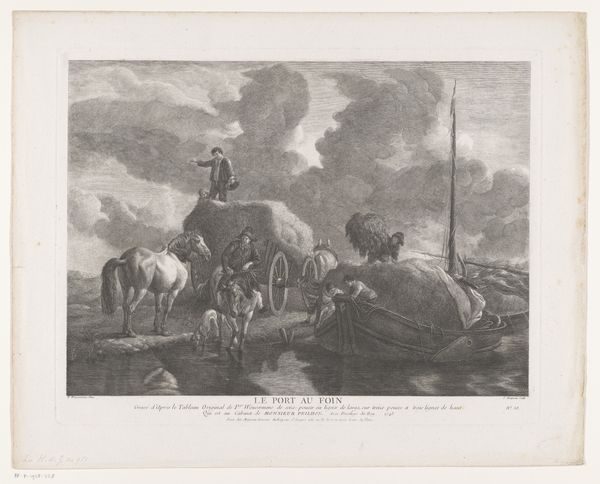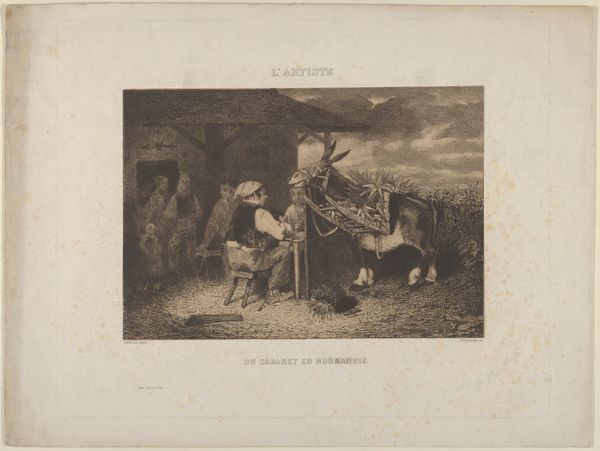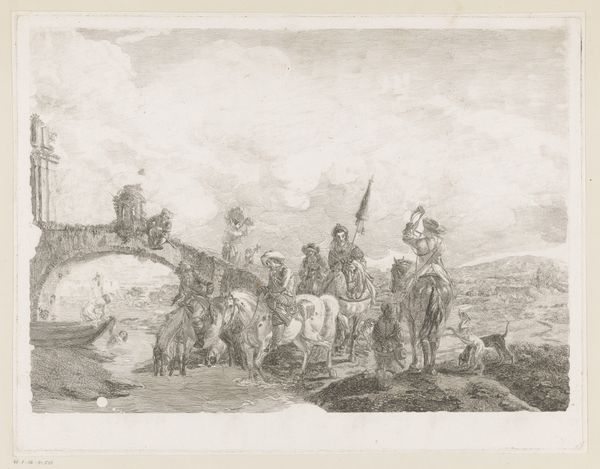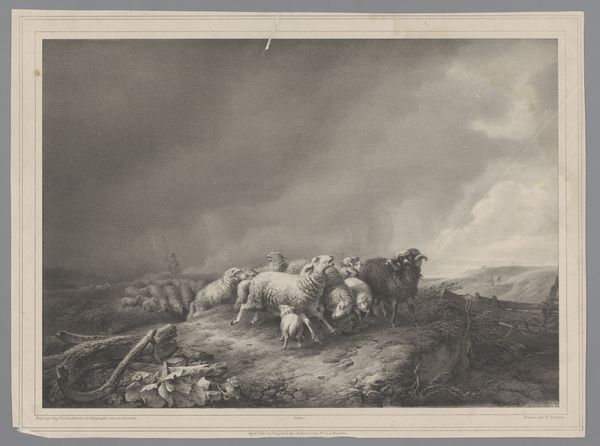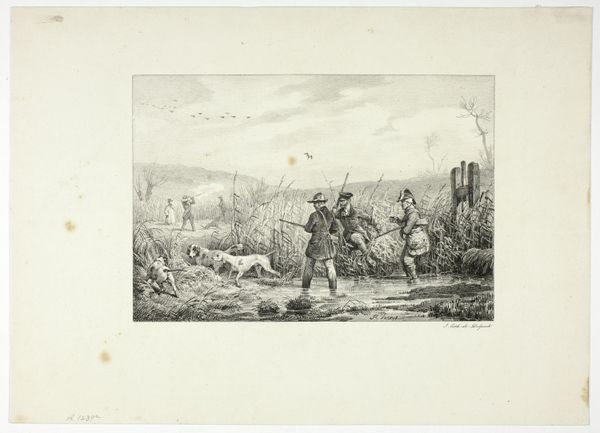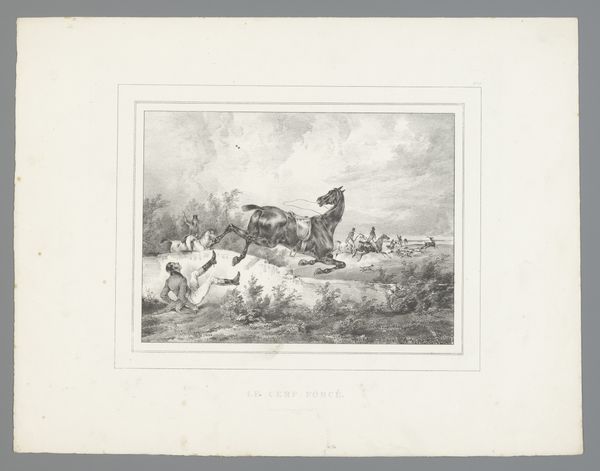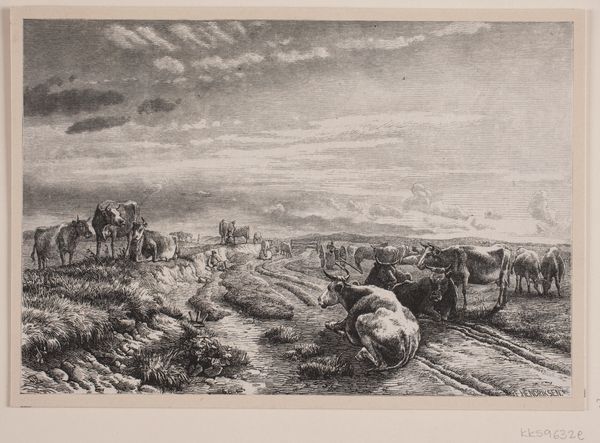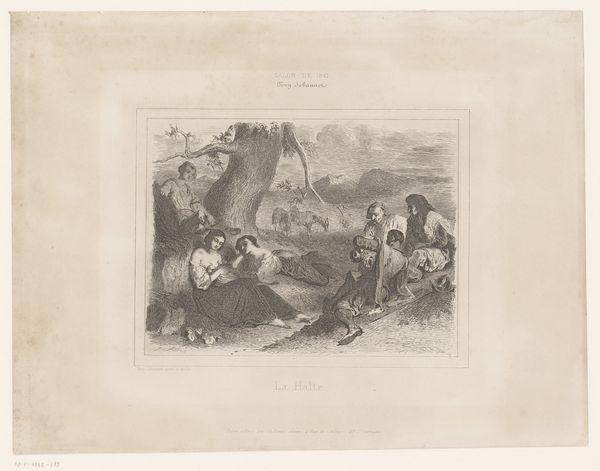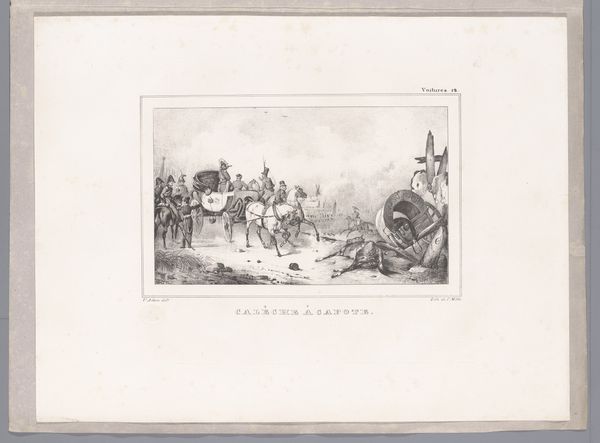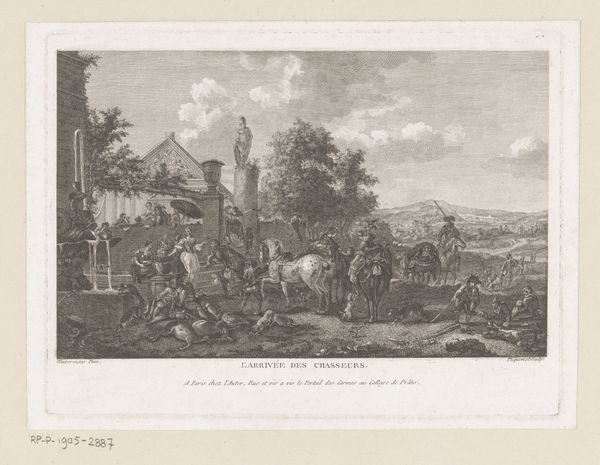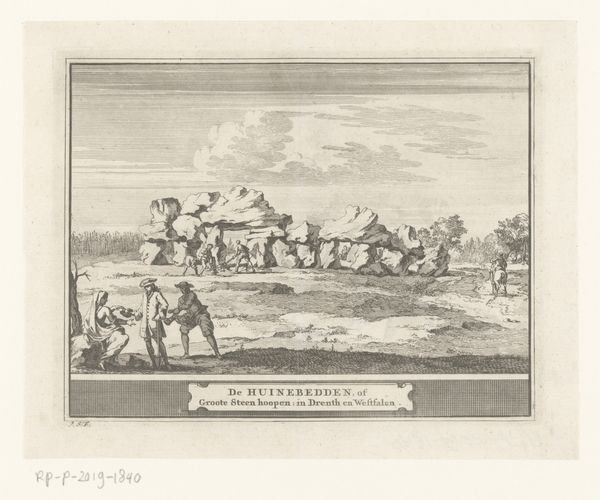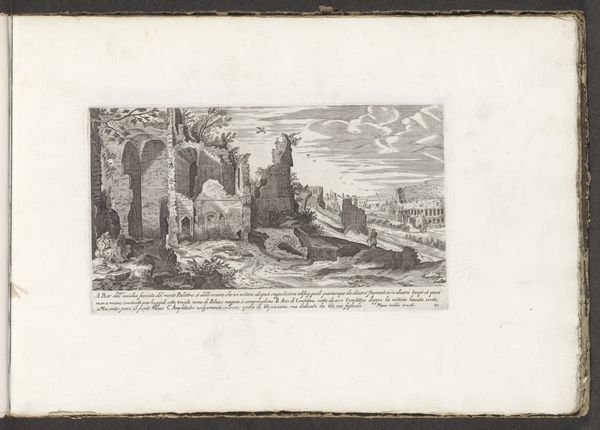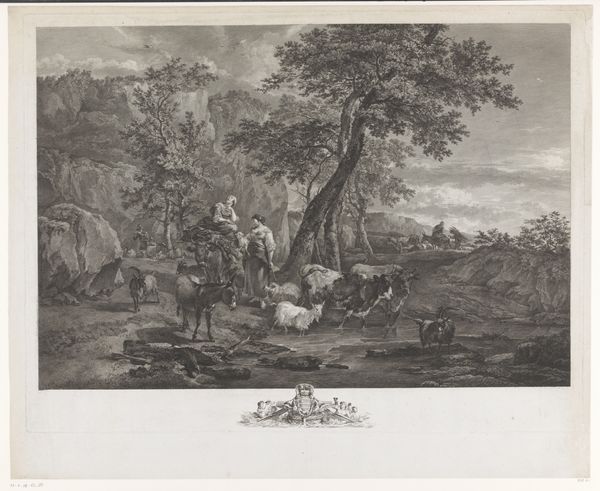
Dimensions: height 281 mm, width 372 mm
Copyright: Rijks Museum: Open Domain
Curator: François Vivares' print, "Herder drijft zijn vee op", or "Herdsman Driving His Cattle", dates to about 1760. It's a romantic landscape scene, rendered as an engraving. Editor: It’s lovely! The soft grey tones give it such a peaceful feel. It looks like everyone's heading home after a long day. Are we in England, perhaps? Curator: It does evoke a certain tranquility, doesn't it? The scene presents a romanticized view of rural life. And yes, Vivares was a French engraver who spent much of his career in England, so this likely reflects the English countryside. We can see elements typical of the romanticism of the time. Editor: That misty distance… the cows look so content. But something strikes me as…almost staged? It feels like a curated idea of peasant life rather than something genuinely captured. Curator: You’re quite astute. Indeed, this is genre painting, portraying everyday scenes. But the 18th century, particularly in England, had a strong interest in the picturesque—a deliberately beautiful or charming arrangement of natural elements. The composition is carefully structured to appeal to those sensibilities. Editor: So, it's less about representing reality and more about fulfilling an artistic ideal? It's a bit like these Instagram "cottagecore" aesthetics, I guess. A yearning for an idealized rural simplicity, which is rarely found, ha! Curator: Precisely! It serves as a constructed fantasy. Even the way the herder stands prominently with his dog almost strikes a pose. Prints like these played an important role in disseminating and shaping ideas about landscape and national identity at the time. They are consumed by specific audiences, urban or aristocratic viewers eager to feel connected to an idyllic countryside. Editor: Hmm, yes. And in the distance we can see what seems like an ancient medieval town on the other side of the lake. Even the ruins become part of the charming landscape! There's an interesting melancholic component to it. Curator: An excellent observation. These prints were a major cultural product. The picturesque image that is so vividly captured is meant to offer to its contemporary audience a particular perception of its society. Editor: Well, the execution is beautiful regardless of all underlying intents! Gives one food for thought as we think of the idealized landscapes sold to us nowadays. Curator: Indeed. Reflecting on that connection to the present really brings this work alive. Thank you for your illuminating views!
Comments
No comments
Be the first to comment and join the conversation on the ultimate creative platform.
